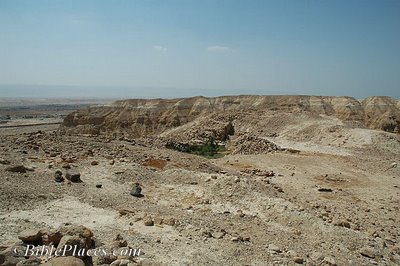The Philatelic Service of Israel is wasting no time in issuing stamps of a mosaic from the Megiddo Prison Church, allegedly built before Christianity became the official religion about 320 A.D. The press release says,
A mosaic from the antiquities site in Megiddo Prison (Kfar ‘Othnai – Legio), which was recently uncovered in IAA excavations that were carried out by prisoners, will be commemorated in a special souvenir sheet that will be issued on the occasion of the international stamp exhibition – Jerusalem 2006. The exhibition will be held in Jerusalem on May 8-11, 2006, at the Jerusalem International Convention Center (Binyaney Ha’ooma). The mosaic was discovered in an antiquities site situated along the edge of the Jezreel Valley, on a hill south of Nahal Kini and Tel Megiddo, in the Megiddo Prison compound….
Depicted in the mosaic are geometric patterns, a medallion with fish and three ancient Greek inscriptions: an inscription mentioning a Roman army office who contributed for the construction of the mosaic (see the margin of the souvenir sheet); an inscription honoring the memory of four women and an inscription that mentions a woman who dedicated a table (altar) to the memory of the Lord Jesus Christos. The fish that adorned the mosaic floor were an early Christian symbol, and it is known that the Christians ascribed an acronym to the Greek word for fish meaning “Jesus Christ Son of God, the Savior”. The combination of the three inscriptions in the mosaic from the third century, which link a Roman army officer with Christianity in a prayer hall, is a unique and rare find.
Jacob Richman’s site (www.jr.co.il) does a good job of posting the latest stamps of Israel, though it doesn’t yet have this one online.

